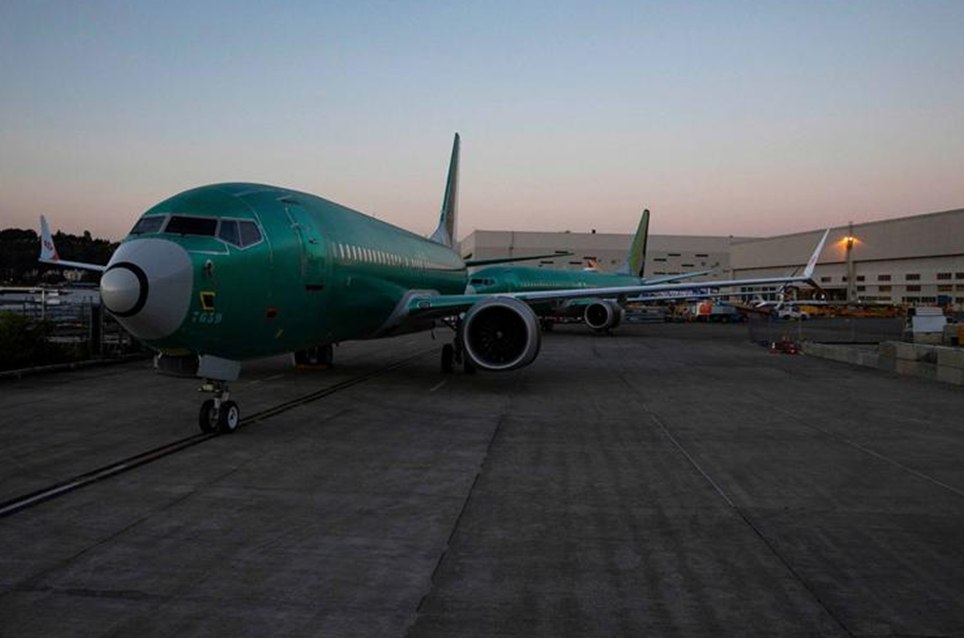NTSB: Boeing underestimated cockpit chaos on 737 Max
A monthslong federal investigation into Boeing’s 737 Max plane has called into question some of the most fundamental assumptions used by manufacturers and regulators when certifying aircraft and challenged Boeing’s repeated assertions that pilots should have been able to easily handle a malfunction on its jet.
The National Transportation Safety Board, which released the results of its review of potential lapses in the design and approval of the 737 Max on Thursday, faulted the company for making erroneous assumptions during the development of the jet and pushed for broader changes in the way airplanes are certified.
The agency said Boeing had underestimated the effect that a failure of new automated software in the aircraft could have on the environment in the cockpit. When activated, the system, known as MCAS, automatically moves the Max’s tail and pushes its nose down. The system contributed to two crashes in less than five months that killed 346 people and caused regulators around the world to ground the plane. Boeing did not fully inform pilots about how MCAS functioned until after the first accident.
The safety board calls for Boeing and federal regulators to revamp the way they assess the risk of key systems on airplanes by giving more weight to how a cacophony of alerts could affect pilots’ responses to emergencies.
In conversations with airlines and aviation unions after the crashes, Boeing executives said that the accidents could have been avoided if pilots had simply run a standard emergency procedure. But the investigation found that Boeing inaccurately believed that the average pilot could easily recover the plane in that situation, considering the chaos that ensued.
“They completely discounted the human factor component, the startle effect, the tsunami of alerts in a system that we had no knowledge of that was powerful, relentless and terrifying in the end,” Dennis Tajer, spokesman for the American Airlines pilots union, said of Boeing.
Boeing continues to grapple with fallout from the two fatal crashes. The Max remains grounded, as the company and federal regulators face multiple federal investigations into how the plane was built and certified in the first place. In a meeting last month, Boeing struggled to answer a raft of questions from international regulators and the FAA about a software fix it has been working on to make the plane safer.
Two investigators handled the bulk of the work for the National Transportation Safety Board, reviewing thousands of pages of documents, interviewing officials at Boeing and the Federal Aviation Administration and studying black-box data from the two crashes, in Indonesia and Ethiopia. They focused on MCAS, which sent both planes into nosedives.
When Boeing developed the Max, it assumed that if MCAS activated erroneously, pilots would immediately react by performing a standard emergency procedure. But the company had tested the possibility of an MCAS failure only in isolation, failing to account for just how chaotic the cockpit would become when the activation caused other malfunctions.
On the doomed Lion Air and Ethiopian Airlines flights, a faulty sensor triggered MCAS, which produced a cascading number of warnings that may have overwhelmed the pilots.
“They did not look at all the potential flight deck alerts and indications the pilots might face,” said Dana Schulze, director of the Office of Aviation Safety at the safety board. “Multiple alerts and indications have been shown through years of research to have potentially an impact where pilots will not respond as perhaps you might have intended.”
Schulze said the agency would like the FAA to review Boeing’s safety assessment of MCAS before allowing the plane to fly again. The plane is grounded while Boeing works on the software update and other changes intended to make it safer.
The safety board also recommended that the FAA require Boeing and other manufacturers to consider the effect of multiple cockpit warnings when assessing how quickly pilots will respond to a malfunction. It also suggested that the agency direct plane makers to develop technology that could diagnose a problem during flight and tell pilots what procedure to follow.
“We are committed to working with the FAA in reviewing the NTSB recommendations,” a Boeing spokesman, Gordon Johndroe, said. An FAA spokesman, Lynn Lunsford, said the agency “will carefully review these and all other recommendations as we continue our review of the proposed changes to the Boeing 737 Max.”
Results of an internal review by Boeing, which its board made public Wednesday, recommended changes to the design of cockpits and the company’s organizational structure to improve safety.
SOURCE: NNY 360


